Today, let’s explore the characteristics, meaning, and cultivation of this beautiful flowering plant, the tiger’s claw vine.
1 Introduction to the Tiger’s Claw Vine
The tiger’s claw vine, or Strongylodon macrobotrys, belongs to the Papilionaceae family. Its unique name derives from the flower’s resemblance to a tiger’s powerful claws, with its petals curving upwards in a majestic manner.
Native to the tropical rainforests of the Philippines, the tiger’s claw vine has since become popular in various countries and has been cultivated into different varieties. Đà Lạt, Vietnam, was the first place in the country to successfully grow this fascinating plant.
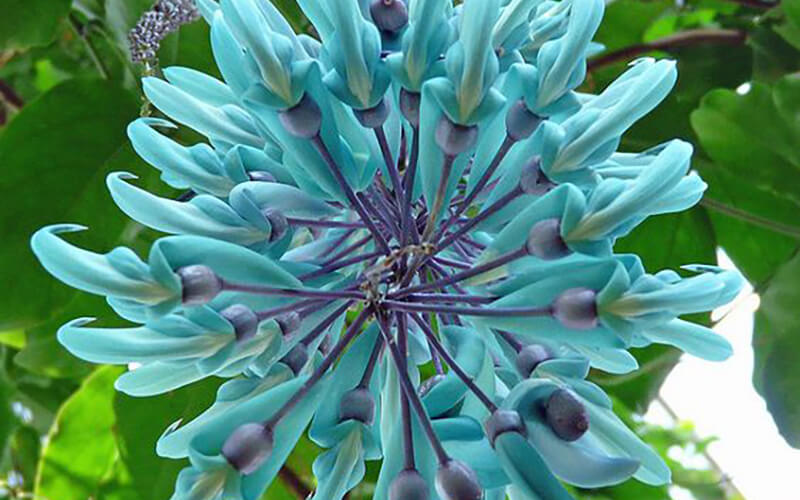 Original Tiger’s Claw Flower
Original Tiger’s Claw Flower
The tiger’s claw vine is a woody climber that typically grows to a length of 1–4 meters. It tends to grow downwards, so it is mainly trained to grow on an overhead trellis, and its leaves are quite sparse.
The flowers of the tiger’s claw vine grow in clusters and can reach impressive lengths of over 3 meters. The most common color of this flower is jade green, also known as Jade Vine. However, it also comes in vibrant shades of red-orange and yellow. The best time to admire these stunning flowers is from April to the end of October.
The tiger’s claw vine also bears large, mango-like fruits with a shape resembling the gac fruit.
2 Types of Tiger’s Claw Flowers and Their Characteristics
The tiger’s claw flower primarily comes in three captivating colors: jade green, red-orange, and yellow. Each color has its unique charm, contributing to the diversity of the species and offering a range of choices for enthusiasts. Interestingly, the color of the flower also indicates its place of origin.
Jade Green Tiger’s Claw Flower
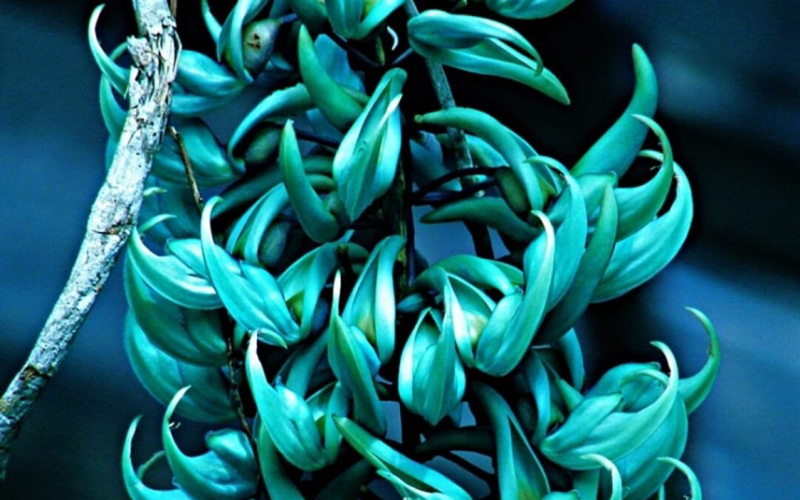 Jade Green Tiger’s Claw Flower
Jade Green Tiger’s Claw Flower
This is the original and most prevalent color of the tiger’s claw flower, known as the Blue Jade Vine in English. In some regions, it is also called the “Marble Vine.” Native to the tropical rainforests of the Philippines, it has also been successfully cultivated in Vietnam.
One fascinating aspect of this flower is that its color changes throughout the day: in the morning, it is a bright blue; at noon, it transitions to a light blue; and in the afternoon, it transforms into a gorgeous jade green. This dynamic color palette, combined with its unique tiger claw shape, makes it stand out wherever it grows.
Red-Orange Tiger’s Claw Flower
 Red-Orange Tiger’s Claw Flower
Red-Orange Tiger’s Claw Flower
While the jade green variety captivates with its gentle sweetness, the red-orange tiger’s claw flower exudes a bold and powerful aura. Also known as the Red Jade Vine, it closely resembles its green counterpart in shape and flowering frequency.
With its fiery hues, this flower easily dominates any floral arrangement. Its popularity stems not only from its vibrant color but also from the belief that it brings good fortune and prosperity.
Yellow Tiger’s Claw Flower
 Yellow Tiger’s Claw Flower
Yellow Tiger’s Claw Flower
This variety is perhaps the most distinctive of the three, originating from India. While it shares the same climbing, woody nature, the flowers of this species grow in smaller clusters or even individually.
Despite being called the yellow tiger’s claw flower, the blooms of this variety feature a mix of yellow and red hues. Another unique characteristic is their shape, which resembles a slipper, earning them the name “Heavenly Slipper.” Some also find the shape reminiscent of a tiger’s open mouth.
3 Symbolism of the Tiger’s Claw Flower
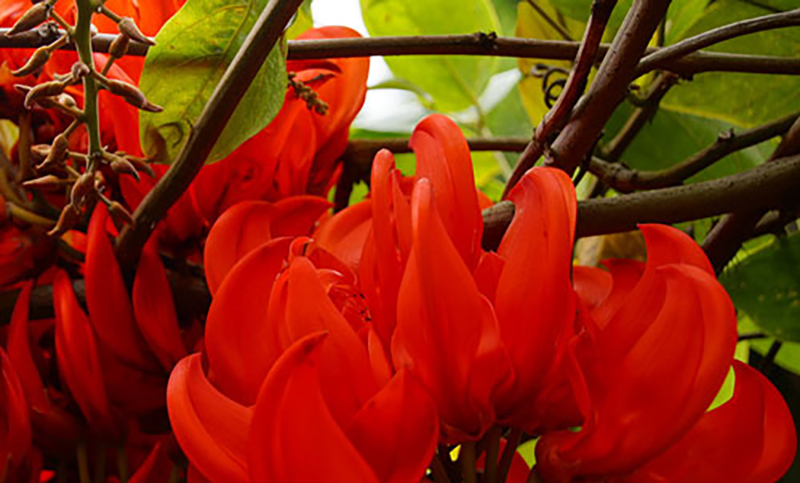 Tiger’s Claw Flower with Upward-Facing Petals
Tiger’s Claw Flower with Upward-Facing Petals
The tiger’s claw flower’s unique name conveys its symbolism: it represents power, strength, and a bold personality. Although the flowers droop downwards, their petals grow upwards, symbolizing resilience and the pursuit of positive outcomes.
The flower’s ability to change colors throughout the day also signifies adaptability and ease in navigating different circumstances. Moreover, the vibrant hues represent positivity, goodness, and luck.
4 Practical Uses of the Tiger’s Claw Flower
 Tiger’s Claw Flower for Decoration and Shade
Tiger’s Claw Flower for Decoration and Shade
With its eye-catching colors, the tiger’s claw flower is primarily used for ornamental purposes, adding a touch of color and liveliness to gardens and indoor spaces. Trained to grow on overhead trellises, it can also provide shade from the sun while enhancing the aesthetic appeal of the area.
Many people believe that the tiger’s claw flower brings good luck and has the potential to generate economic value, making it a desirable addition to any space.
5 Cultivation and Care of the Tiger’s Claw Flower
Planting Techniques
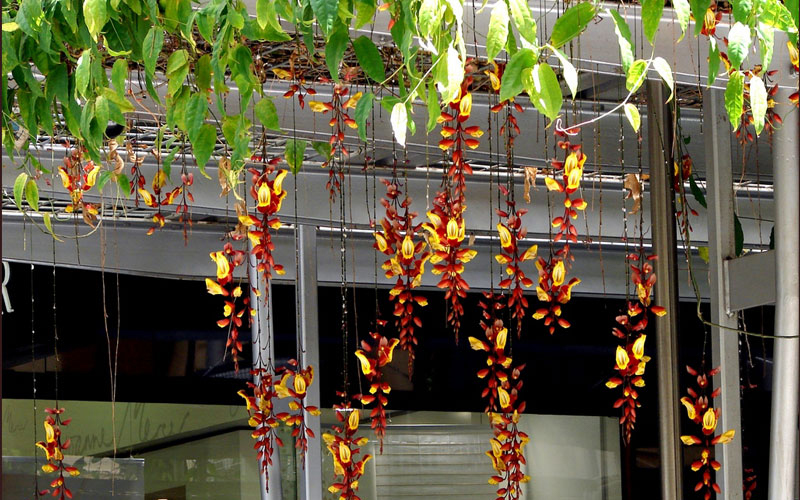 Tiger’s Claw Flower Grown on an Overhead Trellis
Tiger’s Claw Flower Grown on an Overhead Trellis
True to its reputation, the tiger’s claw vine is relatively easy to cultivate and maintain. It thrives in sunny conditions and exhibits rapid growth. The plant favors loamy soil and requires regular watering, especially during its developmental stages. However, it is crucial to avoid overwatering, as this can lead to root rot or waterlogging.
Simple propagation methods such as cutting or layering can be used to reproduce the tiger’s claw vine. However, cutting is the most common technique. To do this, select healthy, long branches close to the root and pull them towards the ground. Secure the tip of the branch in an upright position using a stake. After 3–4 months, you can separate the new plant from the parent vine.
Care Instructions
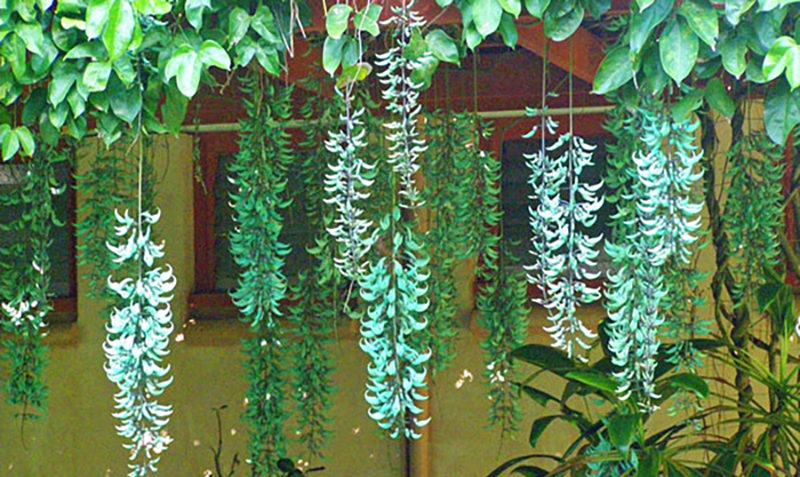 Tiger’s Claw Flower on a Trellis Soaking up the Sun
Tiger’s Claw Flower on a Trellis Soaking up the Sun
Watering
The tiger’s claw flower thrives in moist conditions, so regular watering is essential, especially during its growth and flowering periods. However, it is crucial to avoid overwatering, as this can lead to root rot or waterlogging. Consider using loamy soil rich in nutrients and with good drainage to ensure optimal growth.
A helpful tip to encourage faster flowering is to withhold watering for 2–3 days during the flowering stage.
Nutrition
Monthly fertilizer applications are recommended during the flowering period. The tiger’s claw vine primarily absorbs nitrogen, so choose a fertilizer with a higher nitrogen content.
While the plant is generally easy to grow, inadequate care, insufficient fertilizer, or a lack of nitrogen can result in weak, spindly growth and a failure to bloom.
Pest and Disease Control
Although pest and disease issues are rare due to the plant’s climbing nature and typical height, it is still essential to regularly inspect the plant and take preventive measures to ensure its optimal health.
6 Where to Buy Tiger’s Claw Flowers and Their Price Range
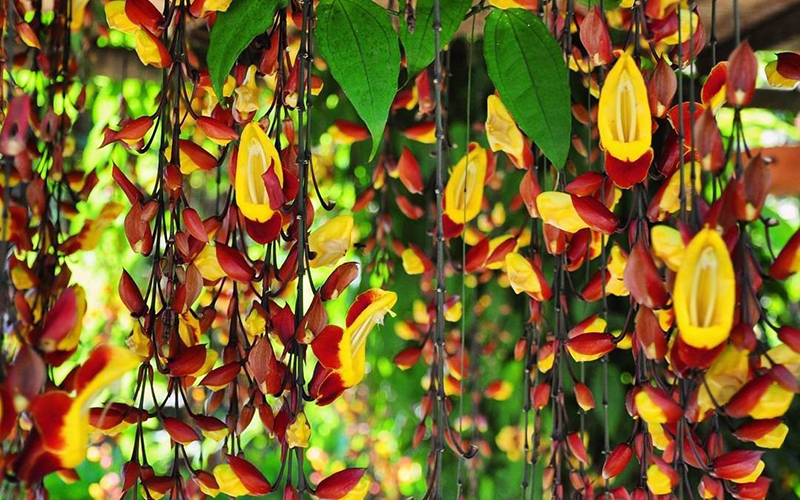 Yellow Tiger’s Claw Flower
Yellow Tiger’s Claw Flower
The cool, humid climate of Đà Lạt and some northern provinces in Vietnam provides an ideal environment for the tiger’s claw flower to thrive. If you’re visiting these regions, don’t miss the opportunity to bring home a tiger’s claw flower as a unique souvenir.
With its increasing popularity, the tiger’s claw flower is now widely available at flower markets and online stores. Prices typically range from 100,000 to 350,000 VND, depending on the quantity and color.































